Fiio FT3: high-end wired headphones without the high-end price
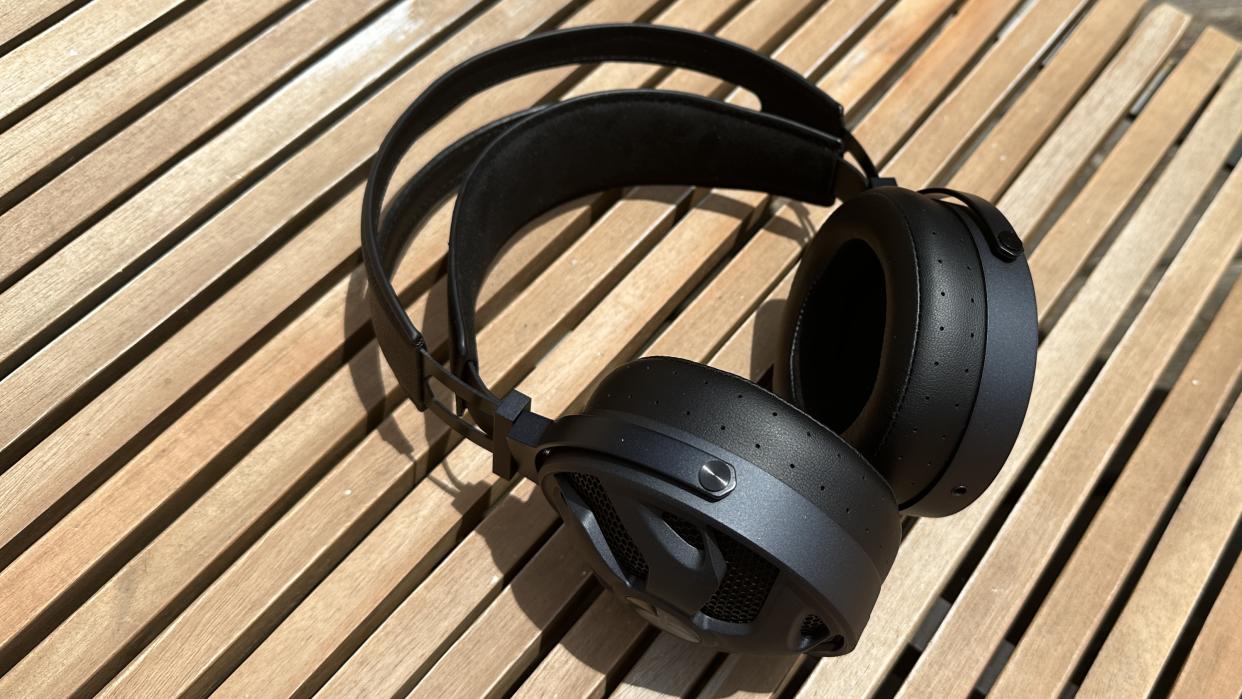
Fiio FT3: Two-minute review
The Fiio FT3 over-ear headphones are an anomaly. A pair of wired, open-backed headphones that look and feel more expensive than they are, sound a little more accomplished (and therefore expensive) than they are, and are specified like more expensive headphones, too.
Made from materials that feel as good as they look, the quality of the build and the finish of the Fiio FT3 headphones is unarguable. From their leather carry case to the cushioned earpad material, they make you feel good about your purchase. And even if they're giving away the last shred of fine detail retrieval to rivals, such as the Grado SR325x, their sonic balance will no doubt find favor with any number of listeners.
There's certainly room for improvement that more expensive headphones could deliver. Depending on which earpads you’re using, either the top or the bottom of the frequency range can sound slightly reticent. Though the connecting cable is esoteric and over-specified, there’s so much of it that it’s almost inviting you to get tangled up. And they’ll make your ears sweaty sooner rather than later, too, if you use the suede pad option.
But that’s to overlook Fiio’s achievement with the FT3. Here are headphones that look, feel and sound a great deal more expensive than they are, which means that to truly beat them, you'll have to spend a lot more. They're an excellent buy for budding mid-range audiophiles.
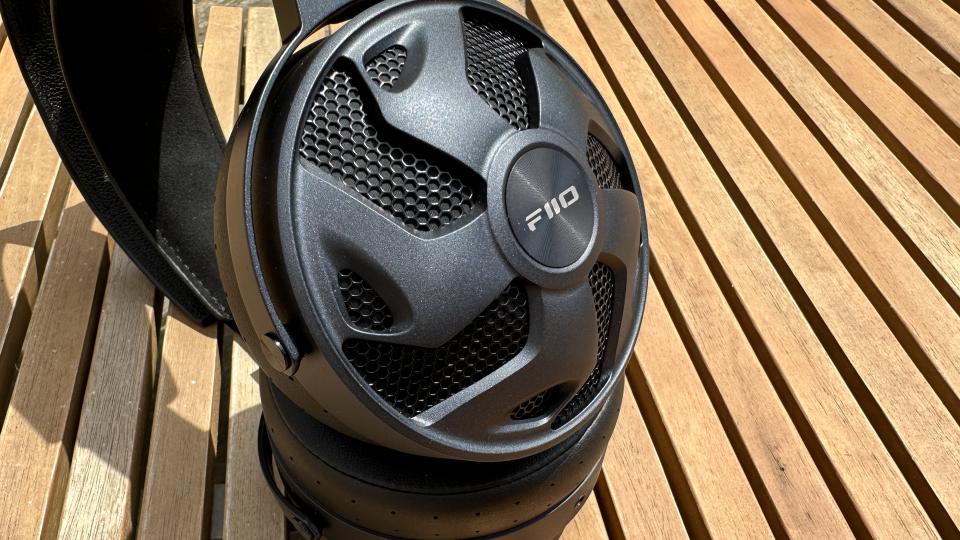
Fiio FT3 review: Price & release date
First available: 10th May 2023
$299 / £289 / AU$449
The Fiio FT3 headphones were launched on May 10, 2023 and officially cost $299 / £289 / AU$449. As you'll discover throughout the rest of this review, I found the FT3 headphones to be incredibly good value.
They look, sound and feel much more premium than I'd have expected and are significantly cheaper than rivals such as the Sennheiser HD-660S2 at $599 / £499 / AU$949, or Beyerdynamic DT 1990 Pro at $599 / £589 / AU$1,159.
However, there are plenty of similar over-ear headphones available at a cheaper price. Do they deliver the same performance? Not quite.
But if you're looking for a pair of over-ears that are wired and prize audio quality above all else, you might consider the Sivga Robin headphones, which are almost half the price at $149 / £149 / AU$269. Or the Audio-Technica ATH-M50X over-ears, priced at $150 / £113 / AU$199. But neither has the openness and grace of the FT3.
Fiio FT3 review: Specs
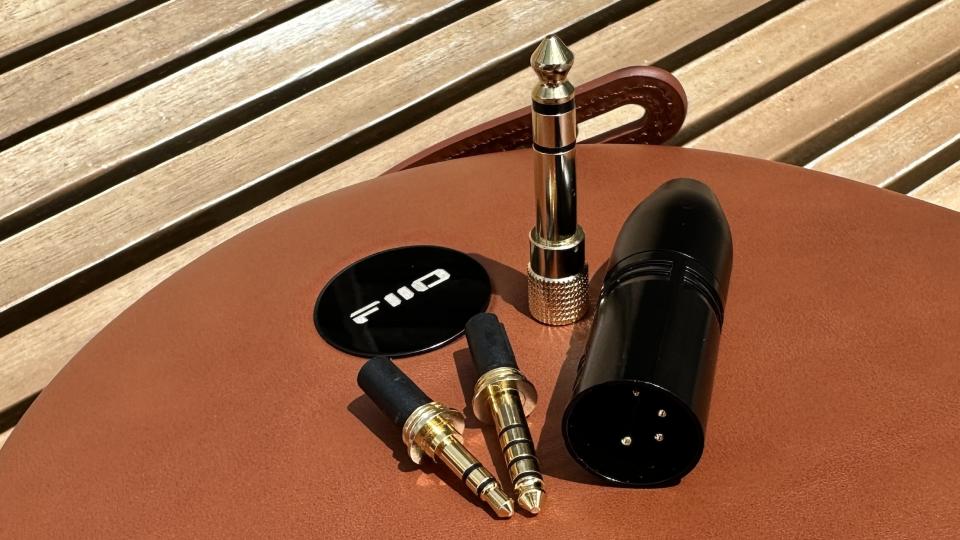
Fiio FT3 review: Features
60mm dynamic drivers with Beryllium-plated gasket and DLC diaphragm
3m Furukawa monocrystalline copper wire cable
3.5mm, 4.4mm, 6.3mm and XLR-4 terminations
Never doubt that Fiio thinks ahead. Japanese electronics specialist Furukawa developed a specific process for annealing monocrystalline copper wire, the benefits of which – including high purity, excellent conductivity, and good longevity – lend themselves to high-end audio applications. Furukawa discontinued this specific cable almost 10 years ago for reasons best known to itself. However, Fiio, despite having only vague plans for over-ear headphones at that point, decided to order almost $50K worth.
Thanks to this extraordinary far-sightedness, Fiio can supply the FT3 with an extremely well-regarded cable length. Why it’s chosen to make that cable 3m / 10 feet long, though, given that the company’s supply is finite, is anyone’s guess.
The cable features a couple of 3.5mm connections at one end – both earcups must be wired – and a single, changeable jack at the other. The packaging includes 3.5mm unbalanced and 4.4mm balanced connections, which fit the cable using a four-pin plug. There’s a 6.3mm adapter to fit over the 3.5mm jack and an XLR-4 adapter for use with the 4.4mm jack. So there should be a connection (or two) to suit your purposes here.
Once you’ve connected the FT3 to a music source using one of these options, the sound is delivered by a pair of large (60mm) dynamic drivers. The oversized nature of these drivers is designed to offer superior low-frequency extension, easy power handling and low distortion.
The driver gasket is coated in Beryllium for the low weight and exceptional stiffness the material offers, while the diaphragm is made from diamond-like carbon. This material is relatively strong and lightweight compared to the most common alternatives, resists break-up well and offers extended frequency response. The driver is backed by an ultra-fine copper-clad aluminium voice coil, making the big driver as responsive as a smaller alternative.
The upshot is a pair of headphones with relatively high (350 ohms) impedance, which is good since it should result in optimal signal-to-noise-ratio performance, but less suitable because the headphones need a relatively high amount of electrical power to do their thing properly – make sure you're packing a good headphone amp or one of the best portable DACs.
Features score: 5/5
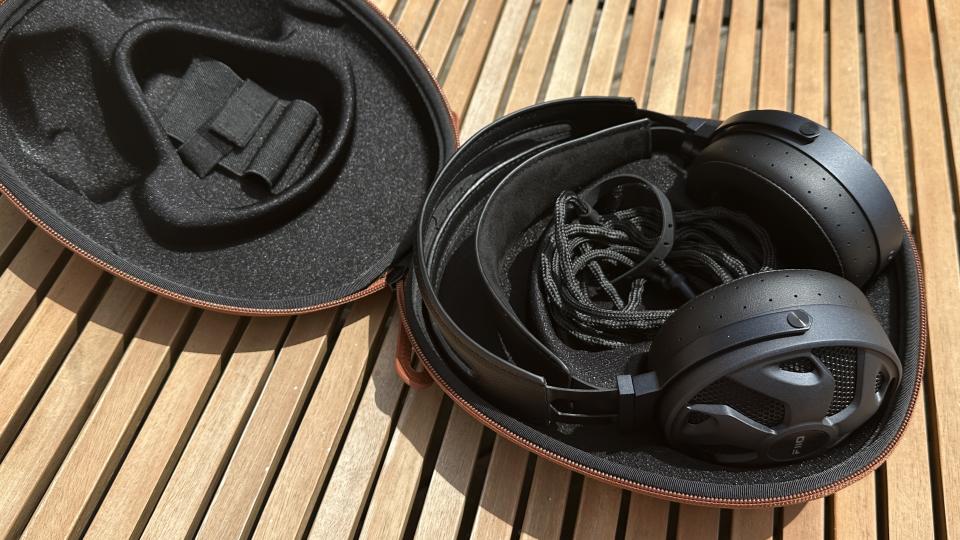
Fiio FT3 review: Sound quality
Detailed, large-scale and quite faithful sound
Swapping earpads affects performance
Need driving quite hard to sound their best
The 350-ohm impedance on offer here means the Fiio FT3 headphones need a metaphorical rocket up them if they’re going to give their best. Most worthwhile (read: reasonably expensive) digital audio players and DAC/headphone amps are almost certainly up to the task. But if you’re asking a laptop or one of those rare smartphones with a headphone socket to drive the FT3s, don’t be surprised if they’re not up to the task.
I used an iFi iDSD Diablo headphone amp/DAC for this review, but I had to turn its gain control to ‘turbo’ to get decent output from the headphones.
Having gone to specific lengths to make the FT3 comfortable, it seems only reasonable to give it one of the biggest, most information-rich files I have – and with a DSD64 file of George Michael’s Careless Whisper playing, the Fiio demonstrate poise and dynamism in more-or-less equal measure.
The FT3 soundstage is big and plausible, with the spaces on it given just as much prominence and emphasis as the occurrences – and the silences are black and, well, silent.
The tonal balance from the top of the frequency range to the bottom is convincing, too, and even though the Fiio headphones push the midrange forward just a touch, they still sound natural and believable. There’s a laudable lack of coloration here, with high detail levels. So you’re seldom in any doubt as to whether or not you’re getting the complete picture.
Low frequencies are swift and straight-edged – the FT3 headphones don’t sound like they extend to the super-deep 7Hz that Fiio is claiming, but the bass they produce is nevertheless punchy. The control of the bottom end is such that there’s proper momentum given to recordings, and rhythmic expression is very strong too.
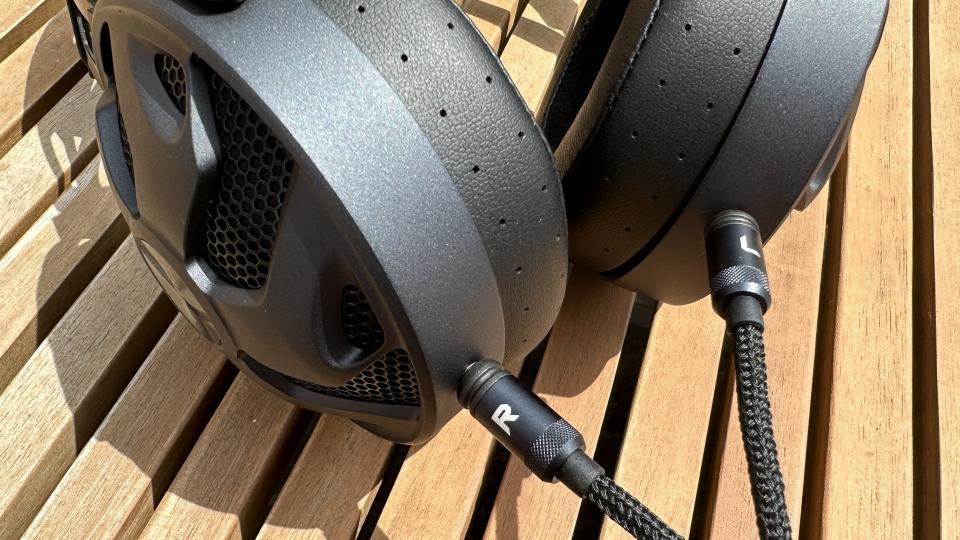
By way of mild contrast, the top of the frequency range isn’t quite so assertive – there’s a degree of shine to treble sounds, but they’re rolled off just a touch. Even at significant volume, there’s never any suggestion of grittiness or coarseness to the top end – but neither is there quite the bite that some recordings require.
Midrange reproduction needs no caveats, though. A vocalist this accomplished is given fine expression by the FT3, the impressive levels of detail and nicely judged tonality allowing all the character and technique to be revealed.
Dynamics, whether they’re the low-temperature harmonic variations in a voice or an instrument, or the big volume shifts that occur (for instance) during the crescendo at the final chorus, are handled confidently.
At the risk of (re)stating the obvious, the FT3 need a fairly deep-breathing source to describe big dynamic shifts properly. However, given the right partners, the Fiio can put a significant distance between the quietest and the loudest moments in a recording.
All of the above assumes you’re wearing the suede-covered earpads (which are, no two ways about it, a little bit sweaty). Switch to the protein leather alternatives, and a) they don’t heat your ears quite as quickly, and b) the sonic differences are mild but noticeable.
Fundamentally, the sound of the FT3 headphones shifts upwards just a little when you change pads – low frequencies lose substance, treble sounds gain a little bite and brightness. Whether or not the sound is ‘better’ this way is a matter of personal preference, but there’s no denying it’s ‘different’ – at least a little.
Sound quality score: 4.5/5
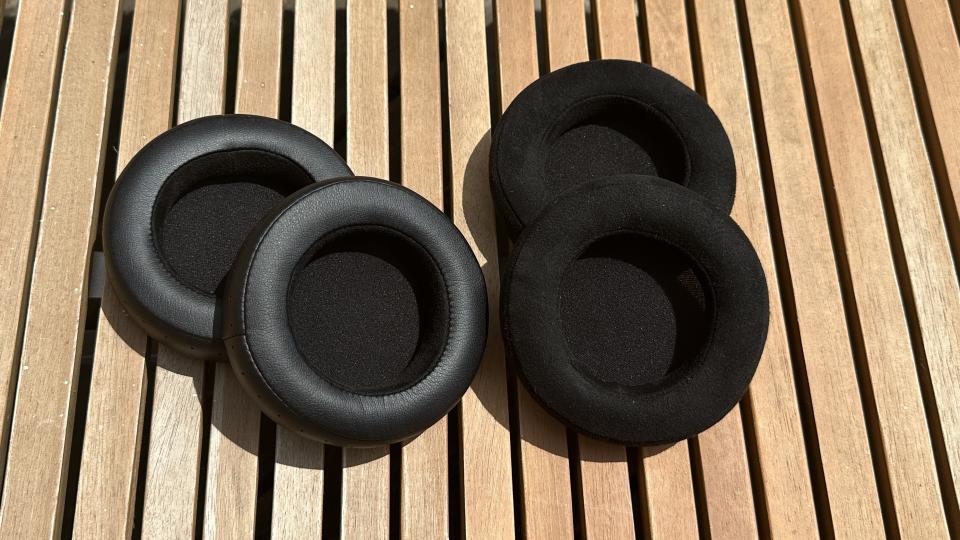
Fiio FT3 review: Design
Open-backed configuration
Three-axis swivelling earcups
Choice of earpads
Like the features section, where design is concerned, the FT3 headphones are at odds with their modest asking price.
The materials used, the standard of construction and finish, and overall perceived value mean the Fiio headphones have little to apologize for.
This is an open-backed design. The aluminium alloy used for the earcups, yokes, and hanger mechanism is light, tactile and quite good-looking – especially if you don't mind the honeycomb-like mesh design on the earcups.
The earcups articulate through three axes – not by much in any direction, but more than enough to ensure the FT3 will fit most people comfortably.
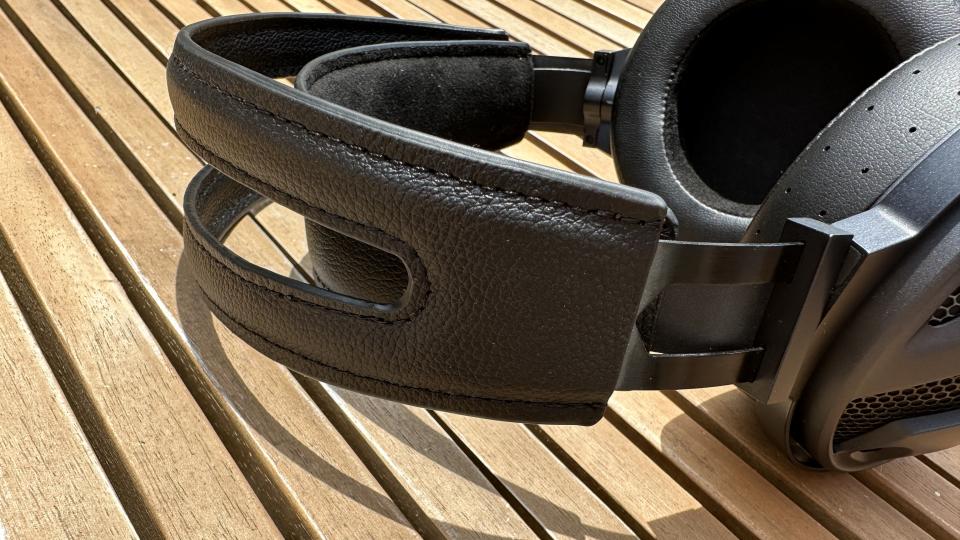
Fiio has angled the drivers inside the earcups so they’re parallel to the wearer’s ear when the FT3 are in situ. The package includes two pairs of earpads for greater flexibility – one is suede-covered, and the other features protein leather. The company claims you can fine-tune your comfort and performance preferences this way.
The headband is a two-piece, protein leather-covered arrangement. The inner section adjusts to fit the wearer’s head. To further enhance the FT3’s ‘high-end bargain’ credentials, Fiio supplies a large, rigid, tan-colored leather travel case to keep the headphones safe during transit.
Design score: 5/5
Fiio FT3 review: Value
Specified beyond the asking price
Sound more expensive than they are...
…and look it, too
The compromises involved in FT3 ownership are minimal, given the asking price. Even the unhelpfully long connecting cable is specified as if it accompanies much more expensive headphones. And where materials, build, and finish are concerned, the FT3 headphones present themselves as a pricier proposition than they are.
They get very little wrong where sound is concerned – and even then, not catastrophically so. Ultimately, these are spectacular value for money.
Value score: 5
Should I buy the Fiio FT3?
Buy them if...
Don't buy them if...
Fiio FT3 review: Also consider
How I tested the Fiio FT3
Reviewed with iFi DSD Diablo amp/DAC
Tested with high-quality digital music files
I have 20 years of experience testing audio gear
I attached the Fiio FT3 headphones to an iFi iDSD Diablo headphone amp/DAC using its 4.4mm balanced headphone output for this review. The iFi was fed by an Apple MacBook Pro loaded with Colibri software – this way, the laptop can play high-resolution digital audio files despite Apple’s best efforts to prevent it.
I have two decades of audio reviewing experience, and I was previously the editor of What Hi-Fi? – so I've tested a lot of (usually more expensive) competitors to these headphones.
First reviewed: June 2023

